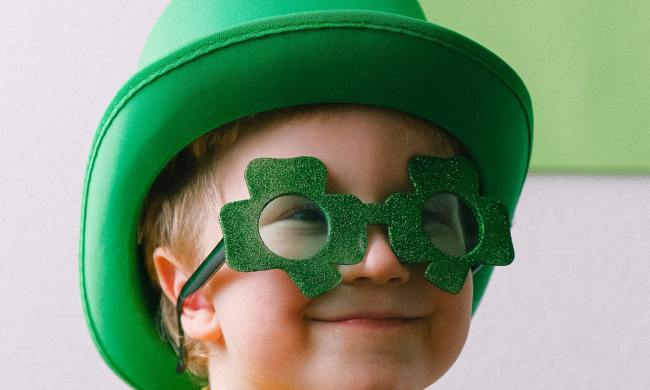
Who doesn’t enjoy a good tongue twister? Kids absolutely love them and their humor and difficultness are not lost on adults. Tongue twisters actually have their roots in Ancient Greece where they were used to help orators and actors prepare to speak.
So, are you ready to get twisted? With tongue twisters that is! November 12 is National Tongue Twister Day, but you don’t need to put those pickled peppers Peter Piper picked in a pot, nor do you need to save tongue twisters for the fall. Tongue twisters are simply a phrase that’s hard for people to say clearly, especially when spoken quickly. Of course, tongue twisters don’t have meaning and they’re always a laugh, but did you know tongue twisters for kids can actually be helpful? It’s true. There are bonuses to saying tongue twisters with kids of all ages.
Benefits of tongue twisters for kids

Many people might think of tongue twisters as a silly thing to say at a party. The big laugh always comes when someone says a tongue twister incorrectly. Sure, tongue twisters are fun, but saying them does serve a purpose, especially for the kiddos. This is why teachers have long used tongue twisters with kids in the classroom. So, what benefits are there to using tongue twisters with children. Don’t worry! Our tongues won’t get twisted talking about these surprising perks of tongue twisters.
Pronunciation
Since people try hard to say tongue twisters correctly, the practice actually helps speakers to articulate clearly and work on word pronunciation.
Developing speech muscles
Yes, people have speech muscles, and saying tongue twisters can help develop the muscles in the tongue used in pronouncing words. This’s why tongue twisters are a great way to warm up those speech muscles before an oral presentation or a performance on stage. Tongue twisters are also used to help kids and adults who have stuttering issues.
Improve reading and language skills
Another added benefit of saying Sally sells seashells by the seashore is that tongue twisters for kids help improve fluency when speaking. Tongue twisters also expand vocabulary. Both of these perks translate into enhancing reading skills.
Learning English
Teachers often use tongue twisters in class with kids for the reasons previously mentioned. Tongue twisters are also a wonderful tool for kids and adults learning English.
Popular tongue twisters for kids

The key to saying tongue twisters is to try to say them three times fast. That’s usually where tongue twisters trip up people, though some of us have difficulty saying them slowly. Here are a few popular tongue twisters to use in the car with kids, at a party, or just because.
- Which witch is which?
- He threw three free throws.
- A snake sneaks to sneak a snack.
- How much wood would a woodchuck chuck if a woodchuck could chuck wood?
- If a dog chews shoes, whose shoes does he choose?
- Nine nice night nurses nursing nicely.
- Four fine fresh fish for you.
- I saw a kitten eating chicken in the kitchen.
- Six sleek swans swam swiftly southwards.
- We surely shall see the sunshine soon.
Classic tongue twister

If you’re looking for a classic tongue twister, get ready to pick those pickled peppers. The complete tongue twister is a long one and great for a pre-speech warmup for kids or adults.
Peter Piper picked a peck of pickled peppers.
A peck of pickled peppers Peter Piper picked.
If Peter Piper picked a peck of pickled peppers,
Where’s the peck of pickled peppers Peter Piper picked?
Try saying that one three times fast! Your tongue may get twisted.
Tough tongue twisters

Tongue twisters do start out very simply. Shelly sheared the sheep is an example of an easy tongue twister. If your kiddos really enjoy tongue twisters and want a bit of a challenge, here are some difficult tongue twisters that just might tie a tongue in knots or giggles.
- Six sick hicks nick six slick bricks with picks and sticks.
- Send toast to ten tense stout saints’ ten tall tents.
- A tutor who tooted the flute tried to teach two young tooters to toot. Said the two to the tutor, “Is it harder to toot, or to tutor two tooters to toot?”
- Betty bought some butter, but the butter was bitter, so Betty bought some better butter to make the bitter butter better.
- I saw a saw that could out saw any saw I ever saw saw. If you happen to see a saw that can out saw the saw I saw saw I’d like to see the saw you saw saw.
Another tough tongue twister is the nursery rhyme about selling seashells at the seashore. If you’ve forgotten that one, here it is:
She sells seashells on the seashore.
The shells she sells are seashells, I’m sure.
And if she sells seashells on the seashore,
Then I’m sure she sells seashore shells.
If you’re looking for more hard tongue twisters for kids, read some Dr. Seuss books. Many of Seuss’ books contain tongue twisters that make for some fun bedtime reading when you mess them up.
Writing your own tongue twisters

Tongue twisters are super fun and kids will get a kick creating their own. It’s not hard. Tongue twisters all have alliteration, consonance, and assonance. Alliteration is putting words together with the same beginning sound. Consonance is how consonants repeat within a word or phrase like Sally sells seashells. Assonance is a group of words strung together that include the same vowel sound. Repetition also plays a part in tongue twisters. When creating your own tongue twister, play with the words and the sounds while trying to create a story like that woodchuck chucking wood.
Tongue twisters for kids are, of course, fun and can get the kiddos giggling. Let’s face it. Tongue twisters make adults laugh, too. That’s probably why there’s a whole day in November devoted to twisting our tongues. Turns out, though, saying tongue twisters has benefits, as well, especially for developing language and reading skills in kids. Adults use them too to get before speeches and stage performances. So, keep picking those pickled peppers.



